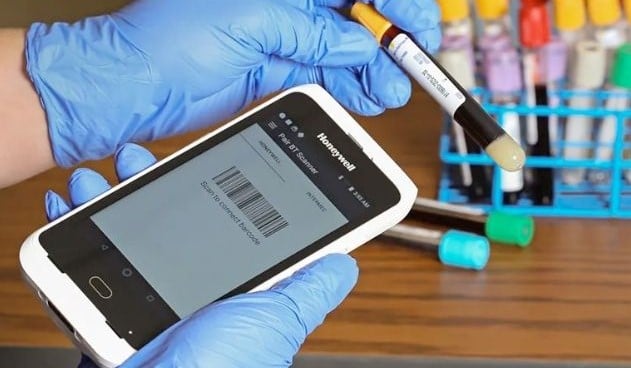Unlocking Efficiency: How Mobile Computers Are Reshaping Healthcare IT
Working in healthcare, whether in a hospital or medical centre, requires staff to learn and work with the latest IT technology and medical software.
Hospitals often look for to update their medical equipment and technology, so nurses and doctors can work as efficiently as possible, whilst keeping patient data secure.
One of the latest IT additions that is becoming increasingly popular in healthcare facilities are mobile healthcare computers.
Being handheld, they’re far more portable than laptops and tablets making them ideal to use across hospitals and large medical centres. They are also easy to integrate into your current technology setup. There's no need to shut down existing systems in order to sync medical data and records to handheld devices.
In this post, we'll take a look at how mobile computers are helping to improve patient outcomes as well as review the features of one of the most popular models on the market - the Honeywell CT40 HC.
Mobile Healthcare Computers vs Laptops
From a functionality perspective, it’s hard to split mobile computers from laptops. Both are small and portable, giving you access to your systems no matter where you are as long as you have an internet connection. They’re both powered, they both have screens, they both have keyboards.
Whilst laptops are mobile, they’re at least 6 times bigger than a mobile computer which is where mobile computers start to pull away from laptops. Being smaller, you won’t have the screen size a laptop has, but the benefit of a mobile computer is it can be connected to an LCD monitor or LCD cart and keyboard effectively giving you the functionality of a laptop or desktop computer with the portability of a mobile phone.
The Benefits of Mobile Computers in Healthcare
All that really splits a mobile computer from a laptop is the size, so you can have all the power of a laptop in your pocket. Most mobile computers designed for healthcare purposes offer a few extra benefits. Unlike a regular laptop, they can be cleaned constantly without affecting the performance of the device.
As well as this, they have a built-in scanner removing the need to carry or mount multiple devices to carts, which speeds up the medication management process and makes it easier to keep patients and data organised efficiently. From a data management perspective, if there’s a lot of data entry required, the handheld devices can be connected to a screen and used like a normal computer.
A Look at the Honeywell CT40 HC
Besides being extremely versatile and compact, the Honeywell CT40 is an Android Enterprise security recommended device that can support enough battery life for a 12-hour hospital shift. It has plenty of memory and can quickly process data without lagging, making it ideal for use in fast paced, challenging environments. Here’s a little more insight into some of the key features.
Secure
As your mobile computers will have access to confidential patient information, the device has “FIPS 140-2 Level 1 security requirements” to keep all data protected. This is the highest form of security in its class so you can feel confident your data is kept safe.
Tough
Honeywell medical devices are designed and built with durability in mind to last the long and busy shifts nurses and doctors work. It is made with healthcare-grade materials, as well as disinfectant-ready housing and connectors to withstand harsh sanitising chemicals over long periods of time.
Touchscreen
It also features a Corning Gorilla Glass 5 touchscreen display, which is tough and durable, making it very difficult to break if it’s accidentally knocked or dropped. This leads to fewer work disruptions so your team get the job done faster and smoother. There is also the option of connecting your Honeywell medical device to a screen or mounting the device on a medical cart for no contact use.
Built in scanner
The Honeywell CT40 is equipped with a high quality, 13-megapixel colour camera with autofocus and N6700 2D imager, making it not only a hanheld computer, but a barcode scanner as well. The barcode scanner allows nurses and doctors to easily read 1D and 2D barcodes on vials, wristbands and just about any necessary surface. It produces high-quality images that can easily be documented and keeps all your scanned barcodes and files organised.
Leading software
Lastly, Honeywell medical devices for healthcare purposes come with operational intelligence software, a cloud-based software that increases organisation and productivity. It is also great for improving mobile worker productivity as well. It allows deeper insights into device tracking and if there are any issues with your company assets.
Find out if a mobile computer is right for your facility
If you’d like to know more about mobile healthcare computers such as the Honeywell CT40, contact the expert team at Debetrek to see how they can be used to upgrade, replace or complement your current medical software and hardware.

